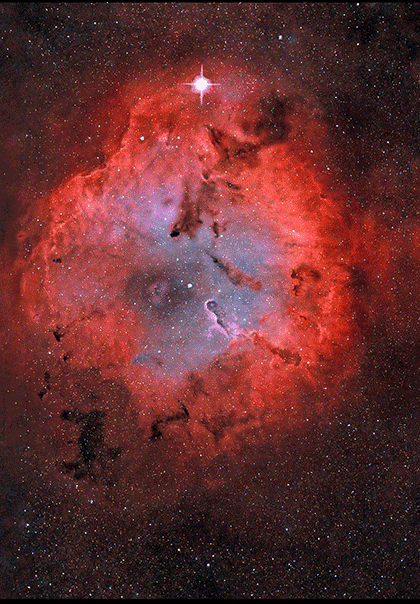J-P Metsävainio is an astronomical photographer who has done something so simple and yet so compelling: combining two images of interstellar objects and animating them gives them a depth and a richness they didn’t have before. They are the most stunning animated GIFs ever.
Check out his gallery of nebula here.
Here’s how he describes his process on this blog:
Due to huge distances, real parallax can’t be imaged in most of the astronomical objects. I have developed an experimental technique to convert my astropics to a artificial volumetric models.
I collect distance and other information before I do my 3-D conversion. Usually there are known stars, coursing the ionization, so I can place them at right relative distance. If I know a distance to the nebula, I can fine tune distances of the stars so, that right amount of stars are front and behind of the object.
I use a “rule of thumb” method for stars: brighter is closer, but if a real distance is known, I’m using that. Many 3-D shapes can be figured out just by looking carefully the structures in nebula, such as dark nebulae must be at front of the emission nebulae in order to show up etc…
The general structure of many star forming regions is very same, there is a group of young stars, as an open cluster inside of the nebula. The stellar wind from the stars is then blowing the gas away around the cluster and forming a kind of cavitation – or a hole — around it. The pillar-like formations in the nebula must point to a source of stellar wind, for the same reason.
He admits that his 3d images are at best educated guesses rather than scientifically-verified representation. They meant to add dimensionality to these interstellar objects that the public mostly sees as static, flat images.
Here’s a video of the “Cat’s Eye” nebula using a similar technique that is amazing. Click the YouTube link to see it in it’s 1080 glory.
So creative and mind-blowing. Head to J-P Metsävainio‘s website for more of his work and info on his process.

That’s a cool way to image it. Right now we don’t have many ways of looking at things like this in three dimensions. I think any attempt that produces results that are as interesting as this should be encouraged.
Maybe he will come up with a way to fine tune it to get even better results. That’s how science works. You don’t get anything perfect the first few times. Sometimes someone comes around much later and adds something to a particular technique that allows the results to be even closer to what was hoped for.